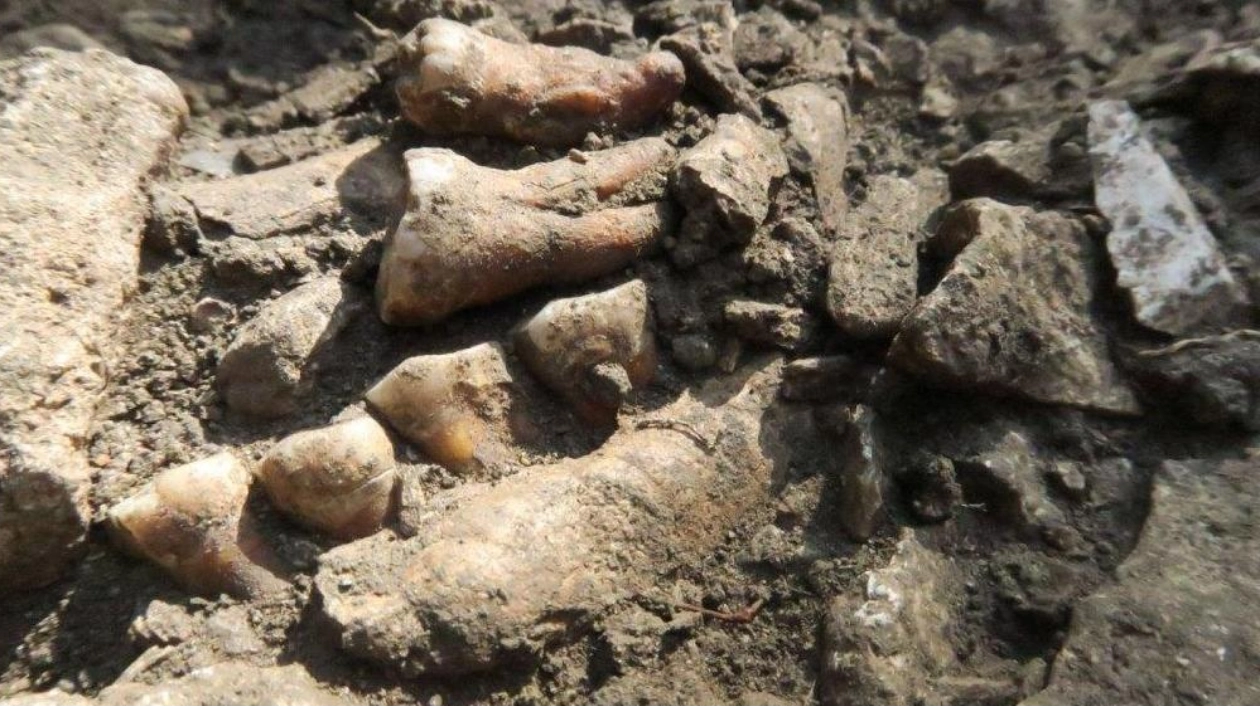A new study proposes that Neandertals followed at least two distinct evolutionary paths leading to their extinction around 40,000 years ago. Traditionally seen as a genetically uniform population, whether considered a separate species or a variant of Homo sapiens, Neandertals now appear to have had a more complex genetic history. The discovery of a partial skeleton of an adult male in France reveals genetic evidence of a Neandertal lineage that diverged from other European Neandertals approximately 50,000 years ago, close to the time these Homo sapiens' close relatives vanished, according to researchers.
Science News is currently gathering questions from readers about navigating the planet's changing climate. What insights do you seek regarding extreme heat and its potential to trigger extreme weather events?
The possibility of a long-isolated Neandertal population in southwestern Europe supports the notion that these hominids likely had a multifaceted evolutionary journey, marked by local extinctions and migrations, much like humans, says paleogeneticist Carles Lalueza-Fox of the Institute of Evolutionary Biology in Barcelona, who was not involved in the new study. An international team, led by archaeologist Ludovic Slimak of Université Toulouse III – Paul Sabatier in France and population geneticist Martin Sikora of the University of Copenhagen, dubbed the French Neandertal discovery 'Thorin,' inspired by a character in J.R.R. Tolkien's 'The Hobbit.' Thorin's remains, found at the entrance of Grotte Mandrin rock shelter in 2015, are still under excavation.
Various dating techniques applied to Thorin's teeth and the animals buried near him, along with his position in the Grotte Mandrin sediment, suggest that this Neandertal lived between approximately 50,000 and 42,000 years ago, according to Slimak's and Sikora's group, who reported their findings on September 11 in Cell Genomics. Sikora notes that molecular segments representing about 65 percent of Thorin's genome were retrieved from a molar. Thorin's DNA was then compared with DNA from other Neandertals, ancient Homo sapiens, and modern humans.
Thorin's DNA shows a closer alignment with the previously documented DNA structure of Neandertals who lived around 105,000 years ago, rather than those dating from approximately 50,000 to 40,000 years ago. However, analyses of carbon and other dietary chemical elements in Thorin's bones and teeth indicate that he lived during an ice age, which did not fully develop in Europe until about 50,000 years ago. Homo sapiens and Neandertals may have alternately occupied Grotte Mandrin a few times between about 56,800 and 40,000 years ago. Thorin's DNA shows no evidence of acquiring genes through mating with Neandertals outside his lineage or with Homo sapiens.
Thorin also inherited a notably high percentage of DNA segments containing consecutive pairs of identical gene variants from his parents. This reduced genetic variation, previously observed in Siberian Neandertals, reflects mating among close relatives in a small population. Collectively, the genetic evidence supports the scenario that Thorin belonged to a Neandertal lineage that separated from other European Neandertals around 105,000 years ago. For the next 50,000 years, it is suspected that Thorin's lineage consisted of small networks of closely related communities that exchanged mates.
The reasons why these ancient groups avoided mating with other Neandertals in the region, possibly due to language or cultural differences, remain unclear, says Sikora. It is difficult to determine whether the population size of Thorin's lineage remained constant or declined over time, possibly as communities became more isolated. Currently, Thorin represents the sole source of DNA from his lineage. Similarities between Thorin's DNA and that of a Neandertal individual from Gibraltar suggest that the newly reported lineage extended across parts of southwestern Europe. However, there is no consensus on the age of the Gibraltar fossil, a partial braincase discovered at a quarry in 1848.
Paleogeneticist Cosimo Posth of the University of Tübingen in Germany notes that if Thorin is indeed 50,000 years old, this would be an extraordinary finding, highlighting a robust genetic structure in late Neandertals. However, further excavation and research at Grotte Mandrin are needed to confirm Thorin's age. Researchers found Thorin's remains in a small, natural depression on the rock shelter floor. Slimak's and Sikora's group cannot yet determine how the body arrived there or whether it originated in older sediment. An older date for the partial skeleton would indicate, less surprisingly, that Thorin belonged to an isolated population that quickly dwindled.
Lalueza-Fox adds that long-term isolation would have resulted in Thorin inheriting a greater number of short DNA segments containing identical gene pairs than reported in the new study. Isolating more of Thorin's DNA or collecting genetic remnants from other fossil members of his lineage will help clarify the evolutionary narrative of these closely related Neandertals.






